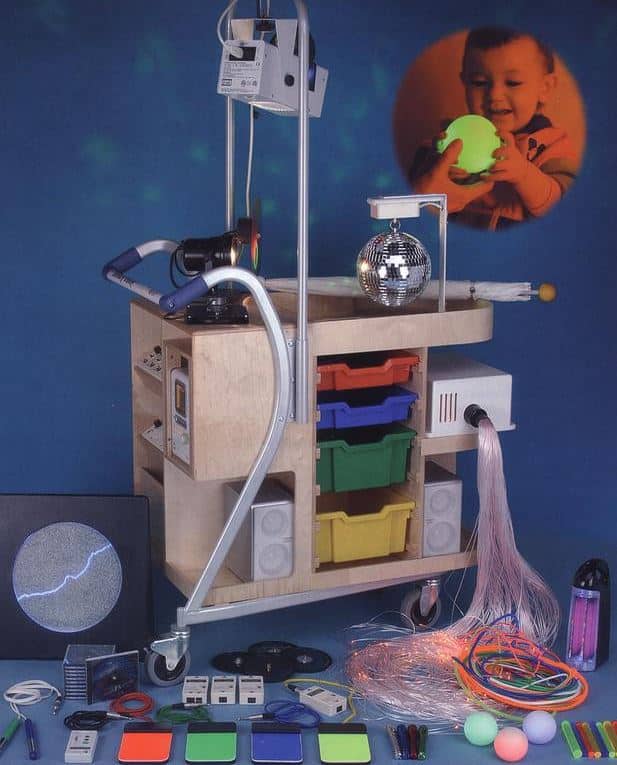
Creating a mobile sensory room is possible, and the best way to do so may be to invest in a sensory cart.
What is a sensory cart?
Simply, it’s a mobile cart or trolley that contains items or tools designed to stimulate the senses. In particular, the senses of sight, hearing touch and even smell.
It can also be used as a mechanism to calm or otherwise occupy children, or adults, that suffer from conditions that benefit from such therapy.
For example, a sensory cart in a classroom for children with special needs may include items such as textured materials, colorful lights, scented items, and sound-producing objects. The purpose of the cart would be to provide sensory stimulation for the students, which can help them focus, relax, or engage in their learning.
It’s also possible that “sensory cart” could refer to a specific type of technology or equipment used in the context of sensory processing or rehabilitation.
Sensory carts are often used in educational or therapeutic settings to provide sensory input to individuals with sensory processing difficulties or sensory integration issues. These may include individuals with conditions such as autism spectrum disorder, attention deficit hyperactivity disorder (ADHD), or sensory processing disorder (SPD).
Sensory carts may contain a wide range of items or tools that are intended to stimulate the senses. Some common items that might be included in a sensory cart include:
- Textured materials such as sand, water beads, or slime
- Visual aids such as kaleidoscopes or light-up toys
- Sound-producing objects such as musical instruments or noise-making toys
- Scented items such as essential oils or scented playdough
- Tactile objects such as fidget toys or stress balls
The specific items included in a sensory cart will depend on the individual needs of the person or group using it. For example, a sensory cart used in a classroom for children with autism might include items that help to reduce anxiety and promote relaxation, such as weighted blankets or calming music.
Overall, the goal of a sensory cart is to provide individuals with sensory input that can help them regulate their emotions, improve their attention and focus, and enhance their overall sensory experience.
Sensory Carts Can Be Cost Effective
The cost of a sensory cart can vary widely depending on the specific items included and the quality of the materials used. Some sensory carts are relatively simple and inexpensive to put together, while others may require more specialized equipment or materials.
In general, the cost of a sensory cart may be offset by the benefits it provides to individuals with sensory processing difficulties or sensory integration issues. For example, a sensory cart in a classroom setting may help students with special needs to better engage in learning activities and reduce disruptive behaviors, which can have a positive impact on their academic progress.
Furthermore, in some cases, sensory carts may be eligible for funding or support through grants, donations, or other sources of financial assistance. For example, a school district or non-profit organization may be able to obtain funding for sensory equipment or therapy services through government grants or private foundations.
Ultimately, the cost-effectiveness of a sensory cart will depend on the specific circumstances and needs of the individuals using it. However, many educators, therapists, and parents have found that sensory carts can be a valuable tool for promoting sensory development, emotional regulation, and overall well-being in individuals with sensory processing difficulties.
Consider if a Sensory Cart is a Solution for You
For ease of movement across spaces and rooms (and budget considerations), sensory carts may be the answer for your education, health care setting or even for home use.



